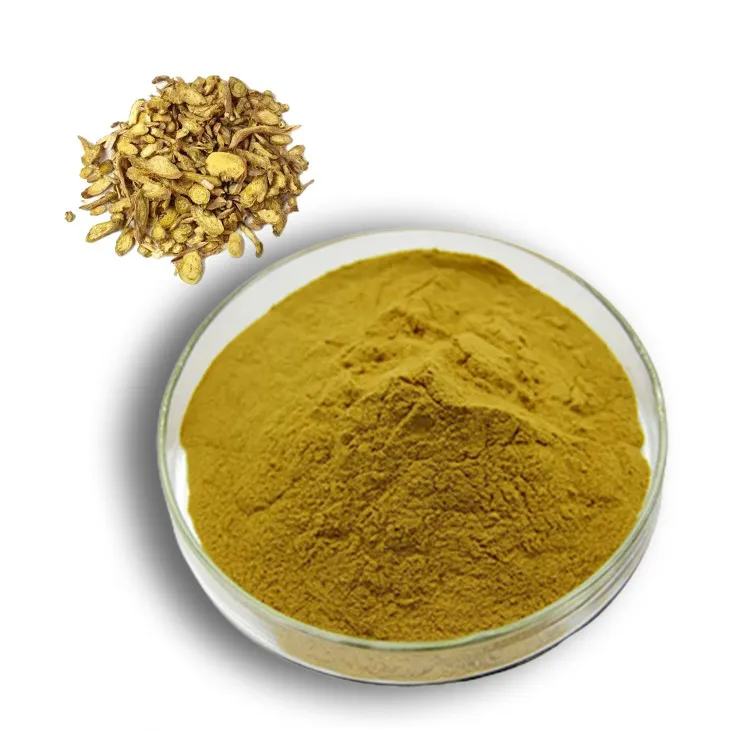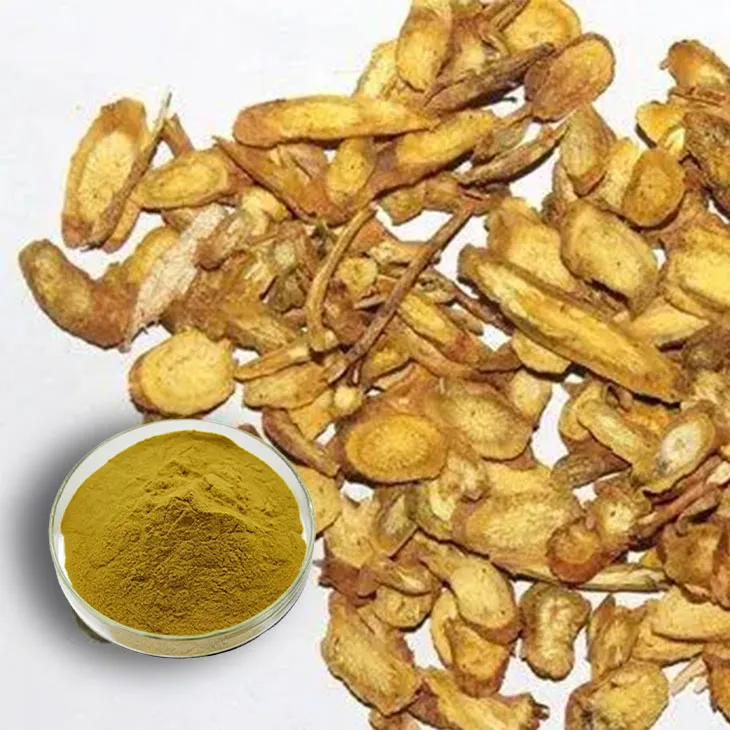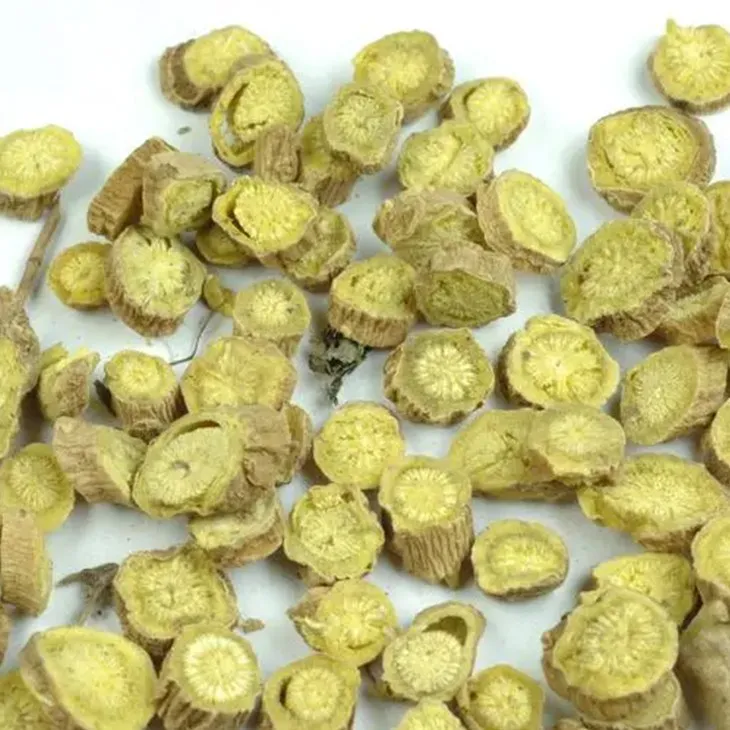- 0086-571-85302990
- sales@greenskybio.com
Trace component organic baicalin.
2024-11-27

1. Introduction to Baicalin
Baicalin, a trace organic component, is a compound with remarkable potential. It is sourced from specific plants and is characterized by a complex chemical structure. This compound has been the focus of extensive research due to its diverse properties and potential applications in various fields.

2. Baicalin in Health and Medicine
2.1 Antibacterial and Anti - inflammatory Properties
One of the well - known aspects of baicalin in the realm of health and medicine is its antibacterial and anti - inflammatory activities. It has been studied for its ability to combat bacterial infections and reduce inflammation in the body. Research has shown that it can interact with bacterial cells and disrupt their normal functions, thereby inhibiting their growth and spread. Additionally, in the context of inflammation, baicalin can modulate the body's immune response and reduce the production of inflammatory mediators.
2.2 Antiviral Activities
Beyond its antibacterial and anti - inflammatory functions, baicalin also exhibits antiviral activities. It has the capacity to target particular viruses and impede their replication process. For example, in the case of some respiratory viruses, baicalin has been shown to attach to viral proteins or interfere with viral entry into host cells. This antiviral property makes it a potentially valuable compound in the development of antiviral therapies. Moreover, its natural origin gives it an advantage in terms of safety and potential for combination with other drugs.
2.3 Baicalin as a Model Compound for Flavonoid Pharmacological Studies
In the area of natural products research, baicalin is regarded as a model compound for studying the pharmacological activities of flavonoids. Flavonoids are a large class of natural compounds with diverse biological activities, and baicalin serves as a representative example. By studying baicalin, researchers can gain insights into the mechanisms of action of flavonoids in general, such as their antioxidant properties, interactions with cellular receptors, and modulation of signaling pathways. This knowledge can be applied to the development of new drugs or the discovery of novel therapeutic targets.

3. Biosynthesis of Baicalin
The biosynthesis pathway of baicalin is of great interest. Understanding this pathway can open up new possibilities for the production of baicalin through biotechnological means. The biosynthesis involves a series of enzymatic reactions within the plant cells. Enzymes play crucial roles in converting precursor molecules into baicalin. By elucidating these enzymatic steps, scientists can potentially engineer microorganisms or plant cells to produce baicalin more efficiently. This could help overcome the limitations associated with its low natural abundance in plants.

4. Baicalin in the Environment
4.1 Role in Plant Adaptation
From an environmental perspective, the presence of baicalin in plants may contribute to the plant's adaptation to environmental stresses. For instance, it may enhance the plant's resistance to pests and diseases. Baicalin can act as a natural defense mechanism for plants. When plants are under attack by pests or pathogens, baicalin may be involved in signaling pathways that trigger the plant's defense responses. It could also have direct toxic effects on pests or inhibit the growth of pathogenic microorganisms on the plant surface.

5. Limitations in Baicalin Utilization
Despite its many potential benefits, the utilization of baicalin is currently restricted by certain factors. One of the main challenges is its low content in plants. The relatively small amount of baicalin present in its natural sources makes it difficult to obtain large quantities for various applications. Another significant obstacle is the difficulty in separating it from other components. In plants, baicalin is often found in complex mixtures with other organic compounds. Extracting and purifying baicalin from these mixtures requires sophisticated techniques and can be time - consuming and costly. These limitations have hindered the full exploration of baicalin's potential in areas such as medicine and biotechnology.
6. Future Perspectives
Looking ahead, there are several promising directions for the study and utilization of baicalin. In the field of medicine, further research is needed to fully understand its mechanisms of action against different diseases and to develop more effective baicalin - based therapies. In biotechnology, efforts should be focused on optimizing the biosynthesis of baicalin and developing more efficient extraction and purification methods. Additionally, exploring the potential of baicalin in other fields such as agriculture, for example, as a natural pesticide or plant growth regulator, could also be an interesting area of future research.
FAQ:
What is the chemical structure of baicalin?
Baicalin has a complex chemical structure. It is a flavonoid - type compound, and its specific structure is composed of certain chemical groups and linkages that contribute to its various properties.
How does baicalin show antiviral activities?
Baicalin can target specific viruses. It inhibits the virus replication process, likely by interfering with key steps in the viral life cycle such as viral protein synthesis or nucleic acid replication, though the exact mechanisms are still being investigated.
Why is baicalin considered a model compound for flavonoid pharmacological studies?
Baicalin is considered a model compound for studying the pharmacological activities of flavonoids because it exhibits a wide range of pharmacological activities such as antibacterial, anti - inflammatory, and antiviral activities. These properties are representative of the potential functions of flavonoids in general, and its chemical structure and properties can provide insights into the behavior of other flavonoids.
What are the limitations in the utilization of baicalin?
The utilization of baicalin is currently limited. One factor is its low content in plants, which means that a large amount of plant material may be required to obtain a sufficient quantity of baicalin. Another factor is the difficulty in separating it from other components in the plant extract, which requires advanced separation techniques.
How might baicalin help plants adapt to environmental stresses?
Baicalin in plants may play a role in the plant's adaptation to environmental stresses. For example, it may enhance the plant's resistance to pests and diseases. It could potentially act as a natural defense compound, either by directly affecting the pests or diseases or by modulating the plant's own defense mechanisms.
Related literature
- Baicalin: A Review of Its Pharmacological Properties"
- "The Biosynthesis and Biological Functions of Baicalin in Plants"
- "Baicalin as an Antiviral Agent: Mechanisms and Applications"
- ▶ Hesperidin
- ▶ Citrus Bioflavonoids
- ▶ Plant Extract
- ▶ lycopene
- ▶ Diosmin
- ▶ Grape seed extract
- ▶ Sea buckthorn Juice Powder
- ▶ Fruit Juice Powder
- ▶ Hops Extract
- ▶ Artichoke Extract
- ▶ Mushroom extract
- ▶ Astaxanthin
- ▶ Green Tea Extract
- ▶ Curcumin
- ▶ Horse Chestnut Extract
- ▶ Other Product
- ▶ Boswellia Serrata Extract
- ▶ Resveratrol
- ▶ Marigold Extract
- ▶ Grape Leaf Extract
- ▶ New Product
- ▶ Aminolevulinic acid
- ▶ Cranberry Extract
- ▶ Red Yeast Rice
- ▶ Red Wine Extract
-
Dan Shen Root Extract/Salvia Root Extract
2024-11-27
-
Carrageenan Extract Powder
2024-11-27
-
Coconut Water Powder
2024-11-27
-
Withania Somnifera Extract
2024-11-27
-
Kidney Bean Extract
2024-11-27
-
Acerola Juice Powder
2024-11-27
-
Coix Seed Extract
2024-11-27
-
Sea buckthorn oil
2024-11-27
-
Hesperidin
2024-11-27
-
Motherwort Extract
2024-11-27





















